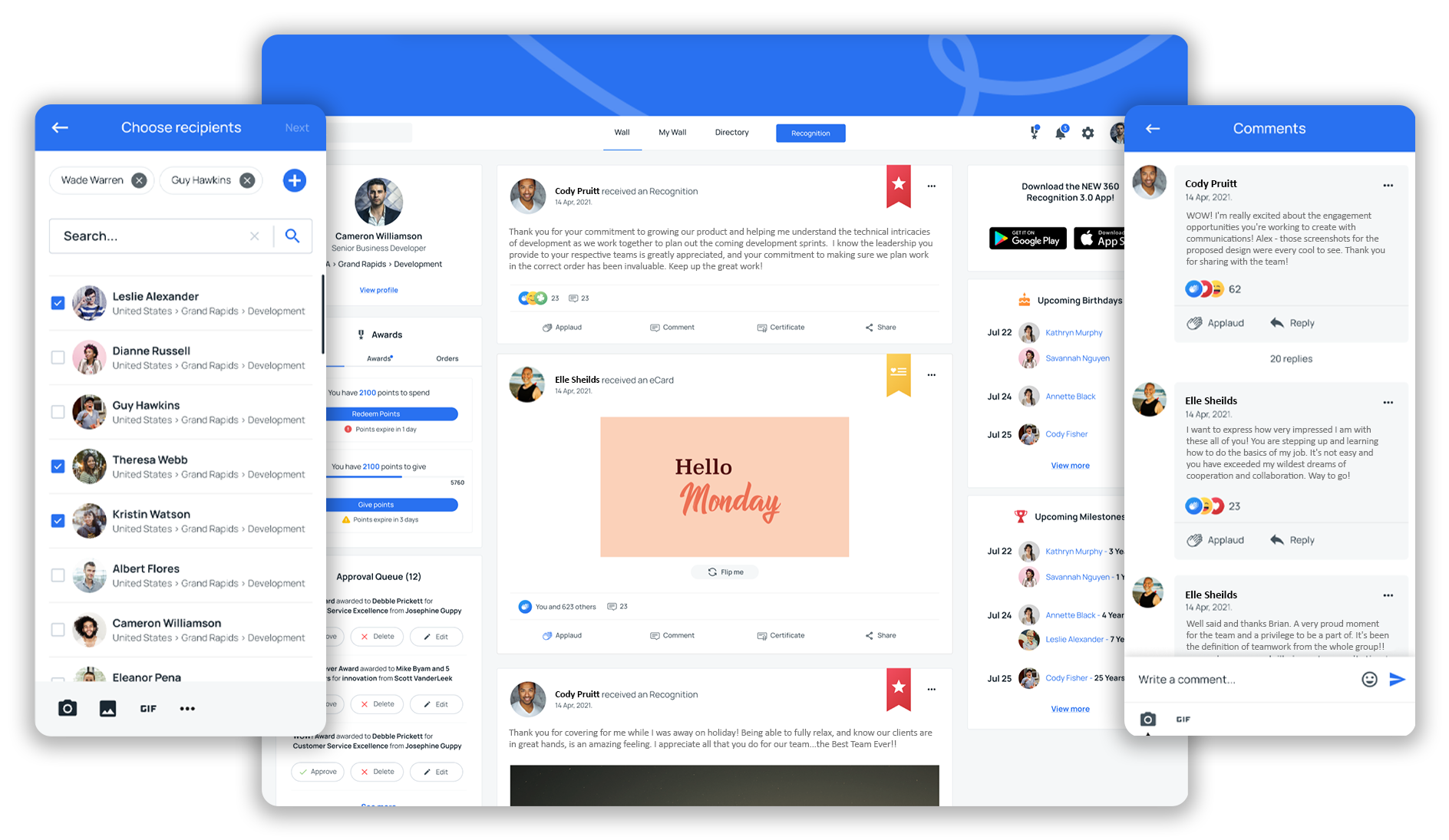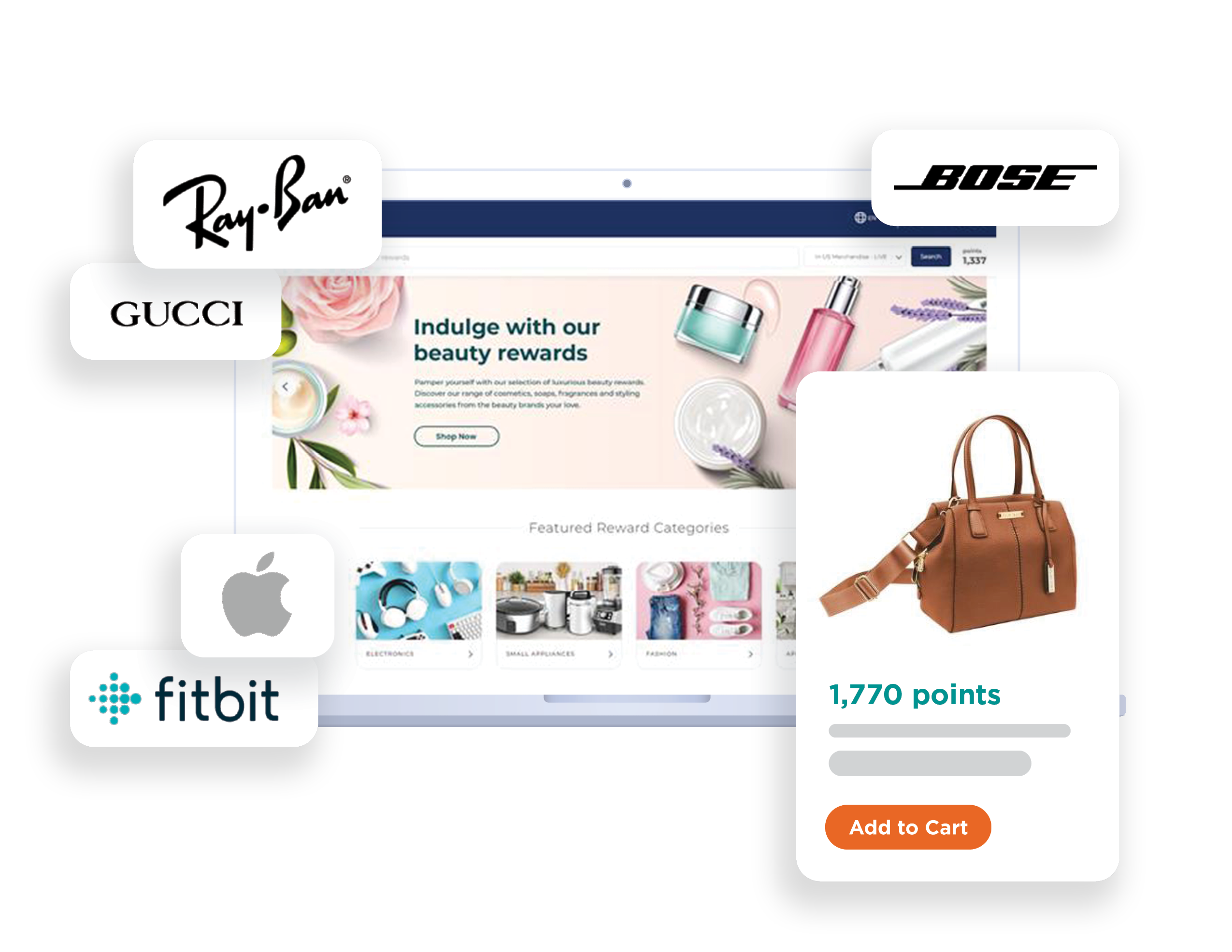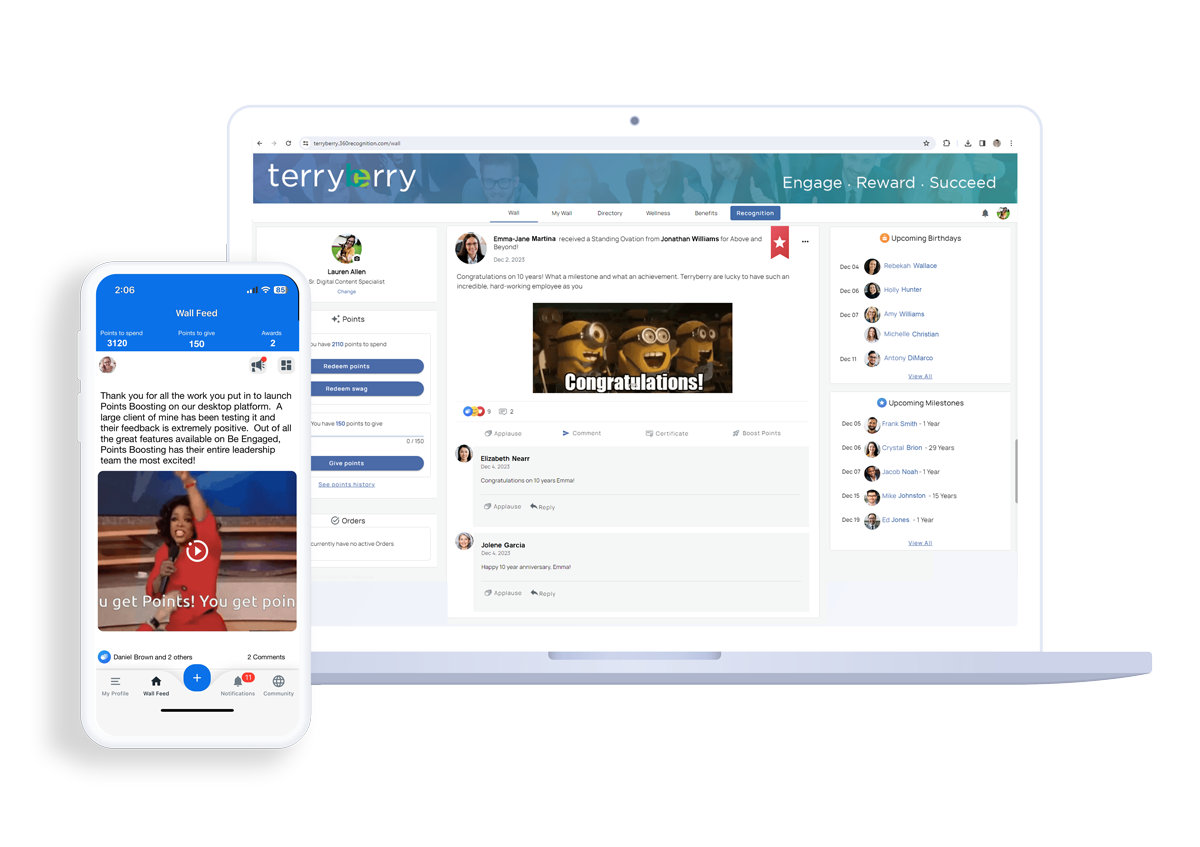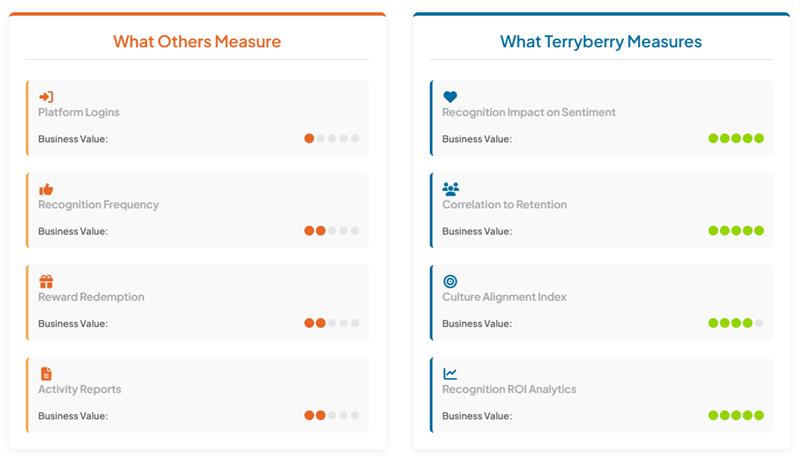September 12, 2025

Peer to peer shout outs are a simple yet powerful way for employees to appreciate each other’s contributions. This type of recognition boosts morale, strengthens teamwork, and creates a positive workplace environment.
In this article, we'll explore the benefits of peer-to-peer shout outs, share practical tips for implementation, and offer creative ideas to make your recognition program a success.
Key Takeaways
- Peer-to-peer recognition enhances workplace morale, increases employee engagement by 43%, and reduces turnover by fostering a sense of belonging.
- Best practices for implementing peer recognition include making it instantaneous, using dedicated platforms, and promoting inclusivity to ensure all employees feel valued.
- Leveraging technology, such as specialized recognition software, can streamline the peer recognition process, improve participation rates, and provide valuable analytics to measure effectiveness.
Understanding Peer to Peer Shout Outs
Peer-to-peer recognition involves employees acknowledging and rewarding each other’s contributions, promoting a company culture of appreciation that extends beyond traditional top-down recognition methods.
This form of recognition is unique because it relies on employees themselves to initiate the acknowledgment, rather than waiting for management to do so. Peer recognition fosters a more inclusive and connected work environment by enabling employees to acknowledge each other’s skills and efforts.
Peer recognition significantly impacts workplace culture and motivation. When peers recognize each other, it enhances team morale and encourages positive engagement.
Studies have even shown that positive feedback can improve overall employee performance by as much as 14 percent. This makes peer recognition not only a tool to boost morale but also a strategic approach to enhancing productivity and performance.
Unlike traditional top-down recognition, peer recognition involves little to no hierarchical oversight, which makes the interactions more authentic and meaningful. Whether formal or informal, peer recognition acknowledges the contributions of colleagues in a way that feels genuine and heartfelt.
This authenticity is a driving force behind the success of peer recognition programs, making them a vital component of a comprehensive employee recognition strategy.
Why Peer to Peer Shout Outs Matter

Peer-to-peer recognition is more than just a feel-good initiative; it’s a critical element in enhancing team morale and strengthening workplace relationships.
When employees recognize each other’s efforts and achievements, it creates a more connected and supportive workplace culture. This sense of community and belonging is essential for fostering a collaborative and inclusive work environment.
The impact of peer recognition on employee engagement cannot be overstated. Studies have found that social recognition can enhance employee engagement by over 40 percent, leading to sustained improvements in morale and productivity.
When employees feel appreciated by their peers, they are more likely to be motivated and committed to their work, contributing positively to the company’s goals.
Moreover, peer recognition can help reduce employee turnover by making employees feel valued and appreciated. Frequent recognition fosters a sense of belonging and community within the workplace, which can significantly decrease the likelihood of employees seeking opportunities elsewhere.
By implementing effective peer recognition programs, organizations can create a culture where employees feel connected, motivated, and engaged.
3 Best Practices for Implementing Peer-to-Peer Shout Outs

Implementing peer-to-peer recognition effectively requires careful planning and execution. The following subsections delve into best practices, offering actionable insights and tips for creating a successful peer recognition program.
1. Make It Instantaneous
Real-time recognition is far more impactful and genuine than planned events like annual performance reviews. When team members receive immediate acknowledgment for their efforts, it fosters a stronger connection among colleagues and leads to improved morale.
Utilizing tools like Terryberry's social recognition platform, users can immediately send praise either publicly or privately, enhancing peer recognition’s immediacy and authenticity. This approach ensures that recognition is timely and relevant, making a huge difference in how appreciated employees feel and how motivated they are to continue performing well.
2. Use a Dedicated Platform
A dedicated recognition platform provides a centralized system where employees can acknowledge each other’s contributions easily. Such platforms, like Terryberry's social recognition platform, are designed to be user-friendly, ensuring that employees can submit recognitions without complications.
The success of these platforms is evident, with companies like Power Design Inc. seeing high engagement rates, where at least 70 percent of employees log into the platform monthly.
Moreover, the use of specialized software for internal recognition programs is highly recommended, as a dedicated recognition platform helps maintain engagement and prevents drop-off in usage, ensuring that the recognition process remains active and effective.

3. Encourage Inclusivity
Inclusivity in recognition ensures that all employees feel valued and appreciated, regardless of their role or position. Recognizing both individual and team achievements prevents feelings of exclusion and fosters a sense of belonging within the workplace.
Tailoring recognition approaches to suit employee preferences, such as allowing for personalized acknowledgments, enhances its effectiveness.
Common mistakes in recognition programs, like focusing only on familiar coworkers, can lead to imbalances. Ensuring that recognition is specific and engaging can improve participation and strengthen the overall culture.
Encouraging inclusivity promotes a positive attitude and a supportive work environment, where employees feel appreciated and motivated to contribute.
4 Creative Ideas for Peer-to-Peer Shout Outs

Peer-to-peer recognition can take many forms, ranging from simple compliments to structured programs that encourage regular shout-outs. Creative peer recognition can make the experience enjoyable and engaging for employees.
The following subsections present specific creative ideas for peer recognition, such as virtual kudos boards, social media shout-outs, and personalized thank-you messages.
1. Virtual Recognition Boards
Virtual recognition boards are platforms where employees can post notes of appreciation for their colleagues. These boards facilitate the sharing of gratitude among team members, promoting a culture of appreciation and recognition.
By encouraging positive feedback and peer recognition, virtual kudos boards help build mutual respect among colleagues, strengthening team connections and trust. Virtual recognition boards enhance employee recognition efforts by making appreciation visible and accessible to remote and deskless employees.
Using virtual recognition boards as part of an employee recognition program can help team members feel appreciated and valued. It also provides a visual and interactive way to celebrate milestones and achievements, fostering a supportive and connected workplace environment.
2. Social Media Shout Outs
Leveraging social media for peer recognition can enhance visibility and build a supportive community among employees. Social media shout-outs allow team members to celebrate each other publicly, making recognition more widespread and impactful.
This approach can also extend the reach of recognition beyond the immediate workplace, showcasing the company’s positive culture to a broader audience.
Implementing social media shout-outs as part of a recognition program can encourage employees to seek more recognition and foster a sense of pride and accomplishment among employees. It also provides an opportunity for employees to share their achievements with friends and family, further enhancing their sense of value and appreciation.
3. Personalized Thank You Messages
Personalized thank you notes can significantly enhance the emotional impact of recognition, strengthening workplace connections and boosting morale.
Personalized thank you messages are also an effective way to acknowledge other's efforts in the workplace, helping to create a supportive and collaborative environment. Sending personalized messages of appreciation to colleagues is an effective way to make employees feel valued and appreciated.
Creative ways to express gratitude, such as giving a thoughtful card with a heartfelt message, can add a personal touch to recognition efforts.
Personalized thank-you notes from leadership can be particularly impactful in creating a sense of belonging and appreciation within the workplace. By recognizing the unique contributions of each team member, organizations can foster a culture where employees feel genuinely appreciated and motivated to continue performing well.
4. Points-Based Recognition
A point-based system in peer recognition allows employees to recognize each other with points redeemable for rewards.
This system is effective because it allows employees to choose meaningful incentives, making the recognition more impactful. For a point-based system to be successful, rewards must be obtainable and desired by employees, ensuring high employee engagement.
Companies that use point-based systems often see increased productivity and collaboration among employees. High point costs can negate motivation, so it’s essential to have an adequate reward structure in place.
Points can be redeemed for various rewards, such as merchandise, experiences, or charitable giving, making the recognition tangible and desirable.

Leveraging Technology for Effective Peer Recognition
Technology can significantly streamline the peer recognition process, making it more accessible and effective across the organization. Using a company-wide newsfeed or public recognition platform facilitates public recognition, ensuring that appreciation is visible to all employees.
Platforms like Terryberry's Be Recognized, serve as a company-wide platform for appreciation, integrating with other systems to reduce HR administrative demands and increase productivity.
The benefit of using a single employee recognition platform is that it provides a seamless experience for users, integrating with existing systems and enhancing the overall recognition process. Leveraging technology creates a more efficient and engaging recognition experience for employees too.
Using Microsoft Teams for Shout Outs
Microsoft Teams can be an effective tool for real-time recognition, especially in remote work environments where maintaining connections can be challenging. Users can customize praise titles and include a message of up to 500 characters when sending recognition, making it a versatile and personalized way to acknowledge team members’ efforts.
In a remote work setting, peer recognition becomes even more crucial, with 95% of respondents believing it is more important than ever. By utilizing Microsoft Teams for shout-outs, organizations can ensure that their remote team members feel connected and appreciated despite the physical distance.
Integrating Recognition Software
Recognition software allows employees to send virtual badges and rewards, enhancing peer-to-peer appreciation. These software solutions can automate the recognition process, making it easier for employees to participate and engage with the program.
Customizable options within the software allow organizations to tailor their recognition programs to reflect their unique culture and values.
Integrating employee recognition software with existing HR systems, as well as software like Teams, enables automatic syncing of employee data, improving the management of recognition programs and helping to recognize employees.
This seamless integration ensures that recognition efforts are efficient and impactful, contributing to a positive and engaging workplace culture.
Examples of Successful Peer-to-Peer Shout Out Programs
Successful peer recognition programs can lead to measurable improvements in employee productivity and morale. Organizations that enhance peer recognition may also experience notable increases in profitability.
By sharing employee achievements on company social media channels like LinkedIn, companies can further promote a supportive work environment.
Case Study: Chelsea Groton Bank's Recognition Program
Chelsea Groton Bank, the largest mutual bank in Eastern Connecticut, wanted to expand recognition beyond milestone awards and create a program that celebrated employees’ day-to-day contributions. With seven core values—innovation, collaboration, trust, professionalism, knowledge, versatility, and positivity—at the heart of their culture, the bank aimed to build a recognition system that strengthened community and reinforced its mission.
To achieve this, Chelsea Groton partnered with Terryberry to launch the Chelsea Acorn Rewards program using our recognition platform. The program included both peer-to-peer and manager-driven recognition, along with a social feed to connect employees across all 15 branch locations.
Employees could recognize one another with Purple Acorn Awards for living the bank’s values, and those recognitions built toward rewards ranging from plush toys to redeemable points for lifestyle experiences. Leadership also played a visible role, recognizing top achievers through the Mighty Oak Award at senior team meetings.
The results have been impressive. Participation in Chelsea Acorn Rewards is more than double the financial industry average, with strong engagement from both employees and managers. Staff members report feeling more connected, not just within their own branch but across the organization.
By weaving recognition into everyday interactions, Chelsea Groton has fostered a culture where employees feel valued, motivated, and deeply aligned with the bank’s mission.
Measuring the Impact of Peer-to-Peer Shout Outs

Measuring the impact of peer-to-peer recognition is crucial for understanding its effectiveness and identifying areas for improvement.
Specialized recognition software provides analytics to measure the effectiveness of peer recognition initiatives. These tools offer insights into participation trends, helping organizations evaluate their recognition efforts’ overall success.
By leveraging data and analytics, companies can refine their recognition programs to maximize their impact and ensure that employees feel truly appreciated and valued.
Tracking Participation Rates
Tracking participation rates in peer recognition activities is a key first step for understanding the overall effectiveness of recognition programs.
However, it's important to understand that measuring participation rates is just the first step. Companies won't be able to evaluate their program's full impact, or link recognition activities directly to business outcomes such as employee retention and customer satisfaction.
A high participation rate, on the other hand, does suggest a healthy recognition culture where employees actively engage in acknowledging their peers’ contributions. This, in turn, helps foster a positive work environment and enhances overall employee engagement.
Analyzing Employee Feedback
Collecting feedback on recognition experiences is vital for making informed adjustments to the program for better outcomes.
By analyzing employee feedback, organizations can identify strengths and areas for improvement in their recognition programs. This ensures that the recognition efforts are aligned with employees’ preferences and contribute positively to their job satisfaction and morale.
Terryberry's recognition platform goes beyond basic participation metrics to reveal what truly matters. Our scientifically-validated platform is the only solution that connects your recognition program directly to employee sentiment, capturing the relationship between appreciation and how people actually feel about your organization.

Evaluating Business Outcomes
Peer recognition acts as a vital element in employee retention, influencing how long employees stay with their organization.
For example, employees who are consistently recognized for their work have a 63% higher likelihood of staying with their organization, compared to just 11% for those who aren’t often recognized. Tools like Terryberry's can help measure the success of a peer recognition program, providing valuable insights into its impact on business outcomes.
Evaluating business outcomes such as employee engagement, job satisfaction, and customer satisfaction can help organizations understand the broader impact of their recognition programs. This data-driven approach ensures that peer recognition efforts drive business success and contribute to a positive and productive workplace culture.
Summary

Throughout this exploration of peer-to-peer recognition, we’ve seen how it can transform workplace morale, enhance employee engagement, and drive business success.
By implementing best practices such as real-time recognition, using dedicated platforms, and encouraging inclusivity, organizations can create a culture of appreciation that resonates with all employees.
Ready to start an employee recognition program at your company? Get started with Terryberry today.

